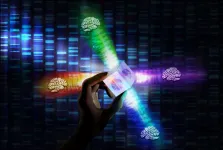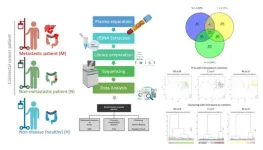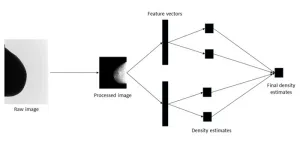(Press-News.org) People with autism spectrum disorder can be classified into four distinct subtypes based on their brain activity and behavior, according to a study from Weill Cornell Medicine investigators.
The study, published March 9 in Nature Neuroscience, leveraged machine learning to analyze newly available neuroimaging data from 299 people with autism and 907 neurotypical people. They found patterns of brain connections linked with behavioral traits in people with autism, such as verbal ability, social affect, and repetitive or stereotypic behaviors. They confirmed that the four autism subgroups could also be replicated in a separate dataset and showed that differences in regional gene expression and protein-protein interactions explain the brain and behavioral differences.
“Like many neuropsychiatric diagnoses, individuals with autism spectrum disorder experience many different types of difficulties with social interaction, communication and repetitive behaviors. Scientists believe there are probably many different types of autism spectrum disorder that might require different treatments, but there is no consensus on how to define them,” said co-senior author Dr. Conor Liston, an associate professor of psychiatry and of neuroscience in the Feil Family Brain and Mind Research Institute at Weill Cornell Medicine. “Our work highlights a new approach to discovering subtypes of autism that might one day lead to new approaches for diagnosis and treatment.”
A previous study published by Dr. Liston and colleagues in Nature Medicine in 2017 used similar machine-learning methods to identify four biologically distinct subtypes of depression, and subsequent work has shown that those subgroups respond differently to various depression therapies.
“If you put people with depression in the right group, you can assign them the best therapy,” said lead author Dr. Amanda Buch, a postdoctoral associate of neuroscience in psychiatry at Weill Cornell Medicine.
Building on that success, the team set out to determine if similar subgroups exist among individuals with autism, and whether different gene pathways underlie them. She explained that autism is a highly heritable condition associated with hundreds of genes that has diverse presentation and limited therapeutic options. To investigate this, Dr. Buch pioneered new analyses for integrating neuroimaging data with gene expression data and proteomics, introducing them to the lab and enabling testing and developing hypotheses about how risk variants interact in the autism subgroups.
“One of the barriers to developing therapies for autism is that the diagnostic criteria are broad, and thus apply to a large and phenotypically diverse group of people with different underlying biological mechanisms,” Dr. Buch said. “To personalize therapies for individuals with autism, it will be important to understand and target this biological diversity. It is hard to identify the optimal therapy when everyone is treated as being the same, when they are each unique.”
Until recently, there were not large enough collections of functional magnetic resonance imaging data of people with autism to conduct large-scale machine learning studies, Dr. Buch noted. But a large dataset created and shared by Dr. Adriana Di Martino, research director of the Autism Center at the Child Mind Institute, as well as other colleagues across the country, provided the large dataset needed for the study.
“New methods of machine learning that can deal with thousands of genes, brain activity differences and multiple behavioral variations made the study possible,” said co-senior author Dr. Logan Grosenick, an assistant professor of neuroscience in psychiatry at Weill Cornell Medicine, who pioneered machine-learning techniques used for biological subtyping in the autism and depression studies.
Those advances allowed the team to identify four clinically distinct groups of people with autism. Two of the groups had above-average verbal intelligence. One group also had severe deficits in social communication but less repetitive behaviors, while the other had more repetitive behaviors and less social impairment. The connections between the parts of the brain that process visual information and help the brain identify the most salient incoming information were hyperactive in the subgroup with more social impairment. These same connections were weak in the group with more repetitive behaviors.
“It was interesting on a brain circuit level that there were similar brain networks implicated in both of these subtypes, but the connections in these same networks were atypical in opposite directions,” said Dr. Buch, who completed her doctorate from Weill Cornell Graduate School of Medical Sciences in Dr. Liston’s lab and is now working in Dr. Grosenick’s lab.
The other two groups had severe social impairments and repetitive behaviors but had verbal abilities at the opposite ends of the spectrum. Despite some behavioral similarities, the investigators discovered completely distinct brain connection patterns in these two subgroups.
The team analyzed gene expression that explained the atypical brain connections present in each subgroup to better understand what was causing the differences and found many were genes previously linked with autism. They also analyzed network interactions between proteins associated with the atypical brain connections, and looked for proteins that might serve as a hub. Oxytocin, a protein previously linked with positive social interactions, was a hub protein in the subgroup of individuals with more social impairment but relatively limited repetitive behaviors. Studies have looked at the use of intranasal oxytocin as a therapy for people with autism with mixed results, Dr. Buch said. She said it would be interesting to test whether oxytocin therapy is more effective in this subgroup.
“You could have treatment that is working in a subgroup of people with autism, but that benefit washes out in the larger trial because you are not paying attention to subgroups,” Dr. Grosenick said.
The team confirmed their results on a second human dataset, finding the same four subgroups. As a final verification of the team’s results, Dr. Buch conducted an unbiased text-mining analysis she developed of biomedical literature that showed other studies had independently connected the autism-linked genes with the same behavioral traits associated with the subgroups.
The team will next study these subgroups and potential subgroup-targeted treatments in mice. Collaborations with several other research teams that have large human datasets are also underway. The team is also working to refine their machine-learning techniques further.
“We are trying to make our machine learning more cluster-aware,” Dr. Grosenick said.
In the meantime, Dr. Buch said they’ve received encouraging feedback from individuals with autism about their work. One neuroscientist with autism spoke to Dr. Buch after a presentation and said his diagnosis was confusing because his autism was so different than others but that her data helped explain his experience.
“Being diagnosed with a subtype of autism could have been helpful for him,” Dr. Buch said.
END
Four different autism subtypes identified in brain study
2023-04-07
ELSE PRESS RELEASES FROM THIS DATE:
New method of clustering colorectal cancer patients using DPE sequencing
2023-04-07
“[...] DPE analysis may have an important role in improving the diagnosis and management of CRC.”
BUFFALO, NY- April 7, 2023 – A new editorial paper was published in Oncoscience (Volume 10) on March 23, 2023, entitled, “New method of clustering colorectal cancer patients using differential presence of exons (DPE) sequencing.”
Colorectal cancer (CRC) is a heterogeneous disease that occurs in the colon and the rectum, parts of the gastrointestinal system. CRC is the third leading cause of cancer-related ...
Deep learning model estimates cancer risk from breast density
2023-04-07
Breast cancer is the most common cancer to affect women worldwide. According to the American Cancer Society, about 1 in 8 women in the United States will develop breast cancer in their lifetime. While it is not possible to entirely prevent breast cancer, various medical organizations advise regular screening to detect and treat cases at the early stage. The breast density, defined as the proportion of fibro-glandular tissue within the breast, is often used to assess the risk of developing breast cancer. While various methods are available to estimate this measure, studies have shown that subjective assessments conducted by radiologists based on visual analogue scales ...
COVID-19 pandemic increased the frequency of intimate partner violence
2023-04-07
Lesbian, gay, bisexual, transgender and queer people who experienced intimate partner violence in their current relationship before COVID-19 had an increase in the frequency of victimization after the pandemic began, according to a Rutgers study.
While national emergencies, crises and pandemics increase the frequency of health risks and intimate partner violence few studies have considered the nuances of social and psychological factors, such as socioeconomic characteristics and mental health, in explaining the increase in intimate partner violence during times of crisis.
“To date, most programs on intimate ...
Scientists discover a way Earth’s atmosphere cleans itself
2023-04-07
Irvine, Calif., April 7, 2023 — Human activities emit many kinds of pollutants into the air, and without a molecule called hydroxide (OH), many of these pollutants would keep aggregating in the atmosphere.
How OH itself forms in the atmosphere was viewed as a complete story, but in new research published in Proceedings of the National Academy of Sciences, a research team that includes Sergey Nizkorodov, a University of California, Irvine professor of chemistry, report that a strong electric field that exists at the surface between airborne water droplets and ...
Webb reveals never-before-seen details in Cassiopeia A
2023-04-07
The explosion of a star is a dramatic event, but the remains the star leaves behind can be even more dramatic. A new mid-infrared image from NASA’s James Webb Space Telescope provides one stunning example. It shows the supernova remnant Cassiopeia A (Cas A), created by a stellar explosion seen from Earth 340 years ago. Cas A is the youngest known remnant from an exploding, massive star in our galaxy, which makes it a unique opportunity to learn more about how such supernovae occur.
“Cas ...
A new quantum approach to solve electronic structures of complex materials
2023-04-07
If you know the atoms that compose a particular molecule or solid material, the interactions between those atoms can be determined computationally, by solving quantum mechanical equations — at least, if the molecule is small and simple. However, solving these equations, critical for fields from materials engineering to drug design, requires a prohibitively long computational time for complex molecules and materials.
Now, researchers at the U.S. Department of Energy’s (DOE) Argonne National Laboratory and the University of Chicago’s ...
The social framework
2023-04-07
On January 6, 2021, the public watched in disbelief as the Capitol building was stormed by hundreds of protestors. Most spectators at home didn't know violence at the Capitol building was already circulating through far-right social media channels for months.
Social media, for better or worse, play a large role in how we consume information – as well as spreading misinformation and conspiratorial propaganda.
Researchers at the University of Pittsburgh received $100,000 as part of the Meta Foundational Integrity Research ...
HonorHealth Research Institute joins City of Hope and TGen in creating method for scoring pancreatic cancer patients for surgery
2023-04-07
SCOTTSDALE, Ariz. — April 7, 2023 — A trio of premier Southwest biomedical research centers — HonorHealth Research Institute, City of Hope and the Translational Genomics Research Institute (TGen), part of City of Hope — have developed a more precise method that may help determine when it is best to surgically remove of pancreatic cancer tumors.
Surgical removal of the tumor can be a key step in helping extend the survival of patients with pancreatic cancer, one of the most aggressive and deadly of all malignancies and the nation’s third leading cause of cancer-related death. Currently, surgery — or surgery plus chemotherapy ...
CHOP-led study identifies two different regulatory T cell populations
2023-04-07
Philadelphia, April 7, 2022—A regulatory class of human T cells descends from two different origins, one that relates to autoimmunity and one that relates to protective immunity, according to a new study led by Children’s Hospital of Philadelphia (CHOP). The findings, published today in Science Immunology, could pave the way for new treatments for autoimmune diseases that target the immune system selectively.
“When it comes to autoimmunity, the prevailing wisdom has been that the only way to stop inflammation ...
Here’s how a worm’s embryonic cells changed its development potential
2023-04-07
Researchers have spotted how specific proteins within the chromosomes of roundworms enable their offspring to produce specialized cells generations later, a startling finding that upends classical thinking that hereditary information for cell differentiation is mostly ingrained within DNA and other genetic factors.
The Johns Hopkins University team reports for the first time the mechanisms by which a protein known as histone H3 controls when and how worm embryos produce both highly specific cells and pluripotent cells, cells that can turn certain genes on ...




